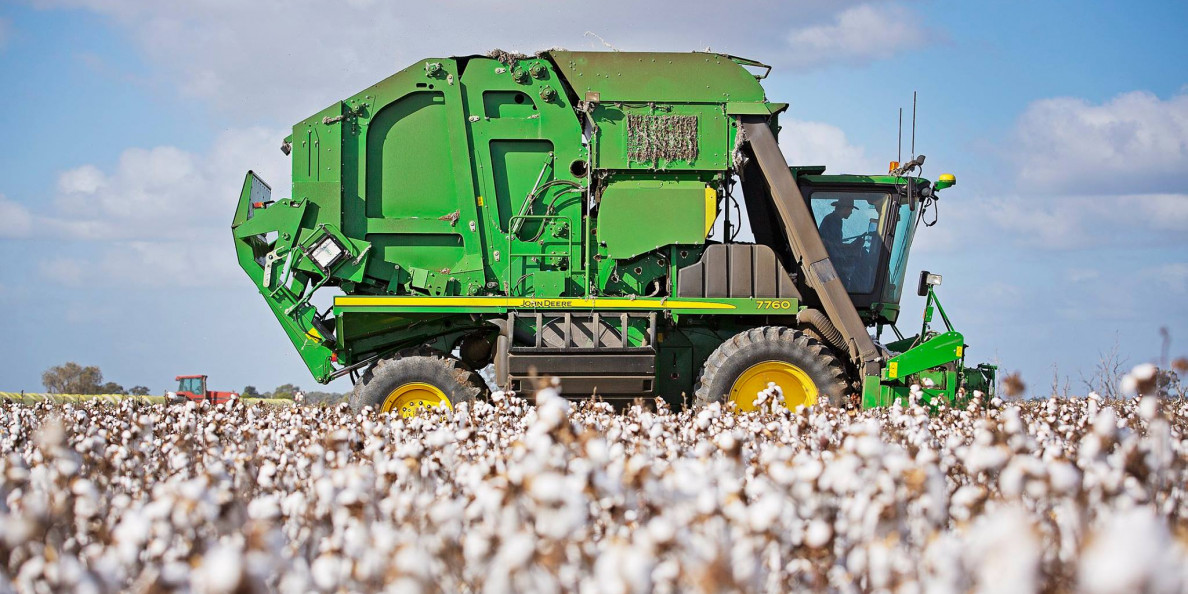By Jeff Thompson, Autauga Quality Cotton Association
I’m reminded of one of my mother’s pearls of wisdom: “If you don’t have anything good to say about somebody or something, it’s best to say nothing at all.”
I’d be wise to heed these words for it’s difficult to find anything good to say about the cotton market of late.
Led to believe a much-awaited trade agreement with China was imminent, there was hope that a significant market rally would follow. However, the market has grown impatient in recent weeks, with both July and December futures closing down 14 of the last 16 trading sessions.
The steepest decline cameseen this past week as negotiations appeared to reach an impasse. Old crop prices fell over ten cents, with new crop dropping eight cents, the result of specs exiting their long position and shorting the market, once again.
Like two school yard enemies, President Trump imposed additional tariffs on $200 billion worth of Chinese goods blaming their backtracking on earlier trade commitments. In retaliation, China’s leader slapped tariffs on an additional $60 billion worth of U.S. goods, as if to say take that!
And on it goes, creating greater uncertainty as to whether an agreement can ever be worked out.
Unconventional Approaches, Unpredictable Outcome
China’s negotiating style of reneging on earlier commitments is nothing new and has gained themselves favorable concessions when dealing with previous administrations.
To their dismay, the current administration is like no other. Though I may not agree with all of President Trump’s tactics, especially the taunting tweets, he has remained steadfast in his convictions.
Elected on a promise to correct the trade deficit with China, one must applaud his bravado for standing firm where others haven’t. With both players not afraid to play by unconventional rules, predicting an outcome becomes much more difficult.
Nonetheless, the Chinese economy is much more at risk in a prolonged trade war as it exports four times more goods to America than America does to China. In addition, President Trump’s reputation for the unpredictable could be the one thing that might make China flinch first. Time will only tell.
Realistic Aid To Farmers?
On a positive note, the further decline in commodity prices has invoked some renewed conversation in our nation’s capital of providing some type of farmer aid. Several options have been mentioned but details as to their implementation are still sketchy.
One possibility is another round of the Market Facilitation program. Certainly, it’s the easiest to administer but will take much more than six cents a pound to right the ship.
Another option being discussed is using tariff monies to purchase ag products from U.S. growers to supply needy countries in a humanitarian effort. Conceptually, this sounds good but financially most likely not feasible.
With U.S. producers caught in the crosshairs, let’s hope a palatable solution can be found.
Domestic Consumption…Conflicting Signals
Enough of this political jargon, let’s look at cotton fundamentals where the news doesn’t get any better, unfortunately. USDA released their May crop report last Friday wherein they lowered domestic consumption to 3.1 million bales, the lowest level since the 1890s.
I will say, however, this does conflict with comments we’ve received from domestic manufacturers who tell us business is very good. In any event, U.S. ending stocks were raised to 4.4 million bales going into this year’s crop.
Surprisingly, the 2019 U.S. crop estimate was only increased a half a million bales to 22 million compared to the 23 or 24 that many of us feared. No doubt, this number will increase if favorable soil moisture conditions are maintained.
Case in point: 2007 was a near record year for cotton production in Texas where over nine million bales were produced — and that was accomplished on two million less acres than that are being planted this year.
Given comparable yields and abandonment as those in 2007, Texas alone could produce nearly twelve million bales in 2019.
The Bales From Brazil
With world stocks, many numbers were adjusted but the bottom line is ending stocks were increased by almost a half a million bales. Globally, the one thing we must truly be concerned with is the new kid on the block, Brazil.
Coming off record crops the previous two years, they find themselves in desperate need to force cotton on the market because they have inadequate facilities in which to store it all.
They are doing so by undercutting world prices. The two biggest influences on prices at present, while both negative, are Brazil and the ongoing China-U.S. trade dispute.
Waiting For All The Factors To Shake Out
So, what does one do, considering all this? If you are looking to price 2019 cotton, the best recommendation would be to do nothing at this time. Don’t attempt to catch a falling knife.
Hopefully, you followed earlier advice and priced a portion of your crop in the mid-70s. Fortunately, time is on our side to see how some of these influences shake out. The December contract’s return to the lower 70s would be a good target to resume pricing new crop cotton.
Those who still have old crop cotton to price don’t have the luxury of time. The July contract has five weeks of trading remaining and can’t be rolled. Hopefully, what’s left is only a small portion of your overall production.
Your individual risk tolerance should be used to determine how far you want to ride it in hopes of allowing time for some of items we’ve discussed to improve.
Until next time.
Πηγή: Agfax

